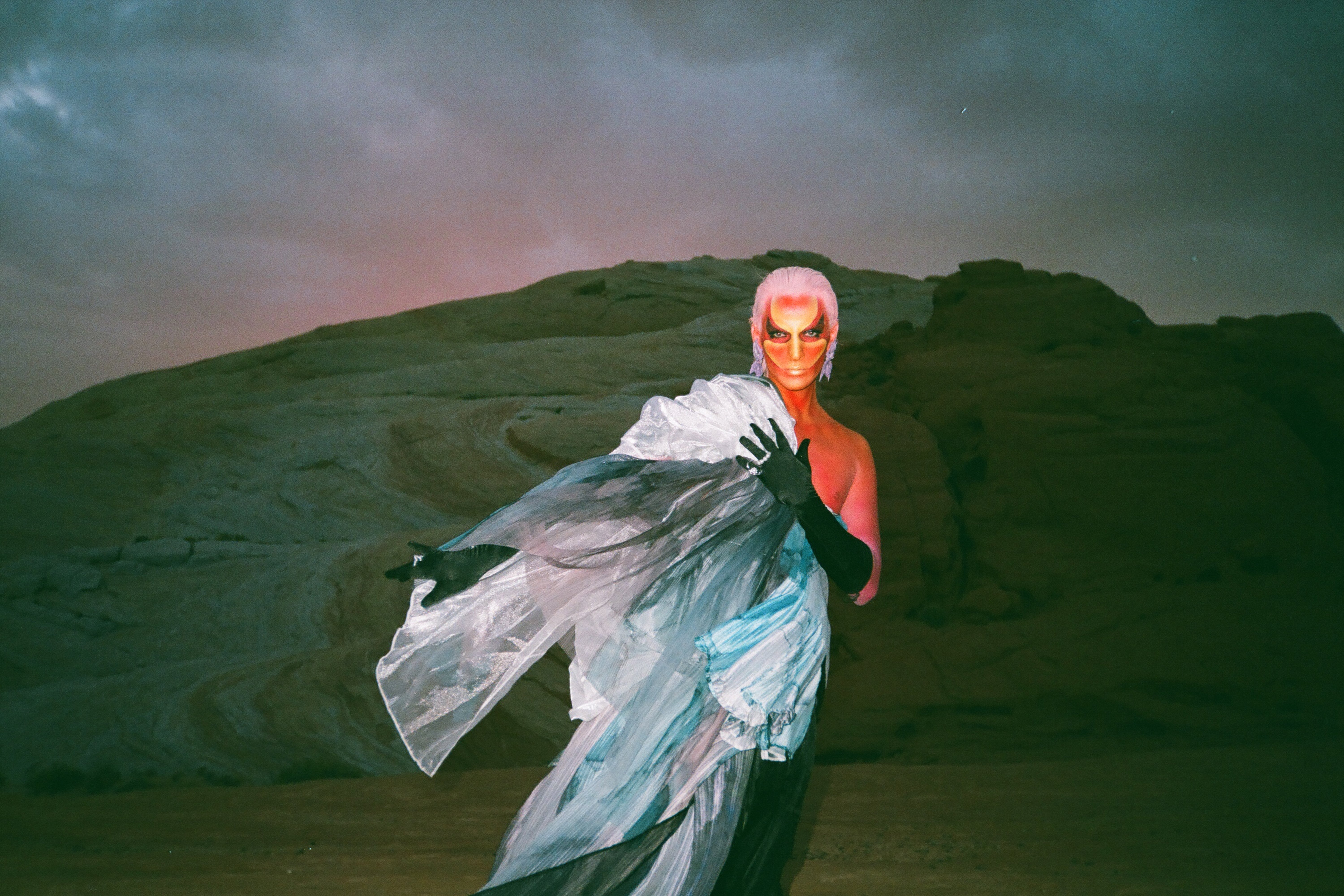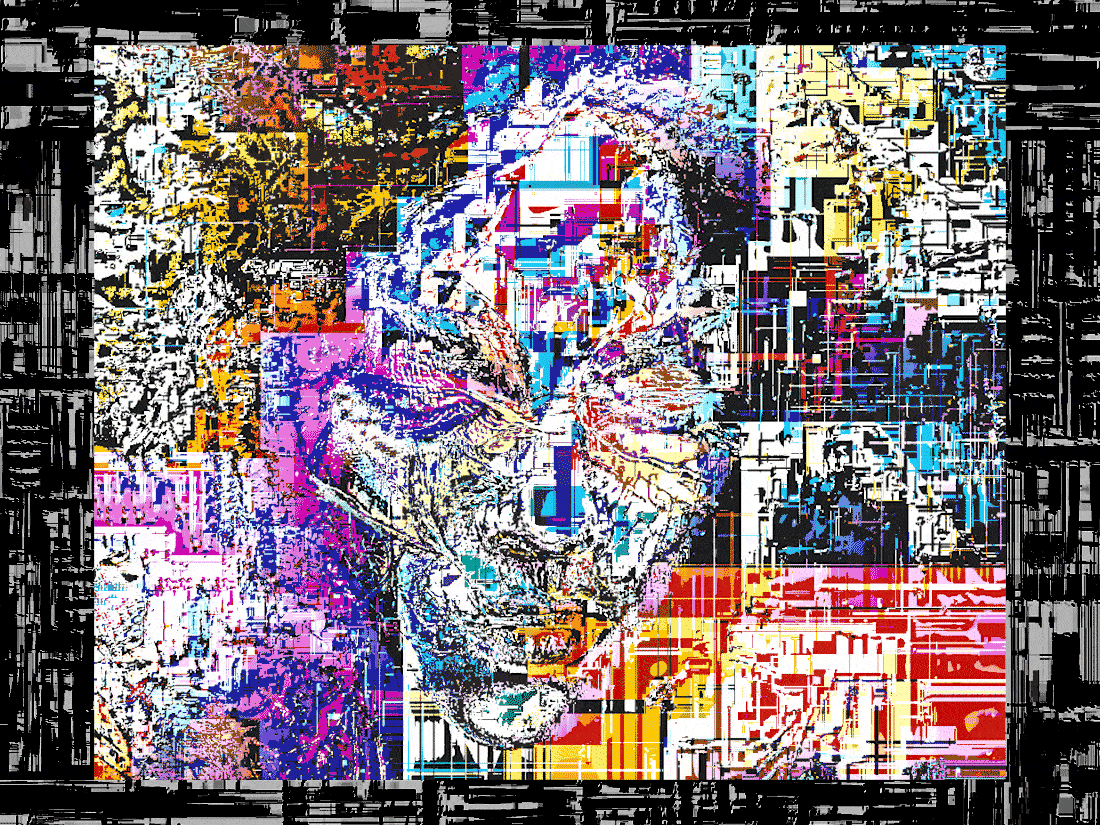SuperRare Labs Senior Curator An interviews ALIENQUEEN about psychedelics, death, and her journey in the NFT space.

ORGASM, ACTIVATED: A conversation with Serwah Attafuah
Multidisciplinary artist Serwah Attafuah, known for constructing ethereal, dystopian cyber landscapes that center powerful and evocative subjects, has been creating since childhood. In the digital realm, she found widespread acclaim with the rise of web3–her piece “Creation of My Metaverse (Between this World and the Next)” was included in Sotheby’s landmark “Natively Digital” auction, and she has partnered with numerous brands and creators to bring collective visions to life. Based in West Sydney, Australia, she plays heavy metal music in addion to fostering her career as a phenomenon in the digital art space.
“EXPLORATION,” Serwah’s recent collaboration with NARS Cosmetics for ORGASM, ACTIVATED, in partnership with SuperRare, is inspired by the tones and energy of the brand’s Orgasam Collection, bringing digital worlds together with notions of beauty and self-expression. An AR filter, ”EXPLORATION,” is a representation of self-love and discovery. Serwah spoke to SuperRare Labs Content Strategist Oli Scialdone about “EXPLORATION,” digital expression, and the distinct hallmarks of her practice.
Oli Scialdone: Before coming to digital art, you were an oil painter. Can you tell me a little bit about how you found not only digital art, but NFTs? How have you explored self-expression throughout your journey as an artist across mediums?
Serwah Attafuah: Both of my parents are artists, so I started being creative at a pretty young age. My dad is an African storyteller and metal sculptor, my mum is a graphic designer and painter. I was always encouraged to try new things, so when I found a set of oil paints in my parents garage/studio, I instantly fell in love and painted every day. We lost our garage in my early teens and I had to find another way to be creative, but I really thought long and hard about what medium would enable me to be creative whenever/however/wherever I wanted. Digital art made the most sense; all I really needed was a computer and I could run free. So now, I’ve been making digital art for over 12 years, which is almost half my life. I started out really experimental because I taught myself and had no real teacher or mentor telling me I was doing things ‘the wrong way.’ It worked out really well in the end because now I feel like I have a style that isn’t attainable, because I created my own systems of doing things.
I got into NFTs in mid 2020 when curator Lindsay Howard invited me to be a part of a digital art group show powered by NFTs. I had only heard of NFTs in passing, but once I got started, it totally changed my life and the way I looked at art moving forward.
OS: You began a TEDx talk you gave in February by speaking about the many metaverses you explored online while growing up, saying that “Having the freedom to try on different metaphysical hats with the technological assurance of an undo button allowed me to curate and explore my identity for years to come.” What did it mean for you to create digital spaces where you could safely explore and express your identity? How did that influence your artwork in ORGASM, ACTIVATED?
SA: It was so important and influential for me to have had those spaces growing up in early versions of the metaverse. I probably would not have gravitated so much to digital art if I hadn’t had those lived experiences. I actually was homeless for a short time when I was a child–going to the internet cafe and diving into a digital wonderland was a bright escape for me. Now I can create spaces from scratch that are sanctuaries and safe havens, and it’s super important to have those for my mental health. I’ve always wanted to be a world builder, and 3D art gives me the tools to do that. Creating the ORGASM universe in pink and gold shades is an extension of this.
OS: You’ve described your artwork as “surreal cyber dreamscapes and heavenly wastelands, populated by afro-futuristic abstractions of self.” What are your thoughts on how those dreamscapes and wastelands in your worlds interact with the images of the self that you depict? How did this theme in your work translate into your work “EXPLORATION” in the ORGASM, ACTIVATED collection?
SA: My work is really about pushing the surreal in both contemporary and traditional view. It’s also heavy on the theme of afrofuturism. To me afrofuturism is about painting afro and black cultures with a positive future focused light. My characters are what I call abstractions of reflections of self, meaning that I’m telling my story through different versions of me. With “EXPLORATION,” I really wanted to capture a feeling like the centre of the universe in orgasmic bliss through what I think is my signature art style of afrofuturism and afrosurrealism.
OS: How did the shade Orgasm inspire your work and interact with your self-expression as an artist?
SA: Pink and gold tones have always been a constant in my work. I see it as a symbol of strength and feminine power. I actually have a deep passion for makeup and have been using Orgasm since I was 15; I feel like I’ve always been trying to replicate the same glittering skin effect and strong glowing looks across all my digital characters.
OS: Can you tell us a little more about your creative process in bringing the piece to life? How did you go about creating the artwork itself, and then translating it into an experiential AR filter that allows others to self-express in the context of your creation?
SA: I started by really trying to tap into what Orgasm meant to me. It’s something personal yet universal. I have a philosophy that an artwork is never really finished and revisit and expand on concepts constantly. So I decided to expand on my piece “Voidwalker” (2020) to create “EXPLORATION,” tying to the subject of universal orgasmic bliss. I first started with mapping out where all the 3D planets would be, then worked on the lighting and overall vibe. The 3D makeup was really interesting to explore. I love working in AR and to be able to create a piece of artwork to go with it was really special.
View ORGASAM, ACTIVATED here on SuperRare.

Oliver Scialdone is a queer writer and artist based in Brooklyn, NY. They earned a dual-MFA from The New School, and their work can be found in Peach Mag, ImageOut Write, and elsewhere. They used to host the reading series Satellite Lit and they're the Associate Editor at SuperRare Magazine.
Tech






Out of the Vault and onto the Chain: the Evolving Nature of Provenance
SuperRare editor Oli Scialdone considers the social experience of provenance and its relationship with community in the Web3 space.
Curators' Choice











Curated Conversations: ALIENQUEEN
SuperRare Labs Senior Curator An interviews ALIENQUEEN about psychedelics, death, and her journey in the NFT space.





















